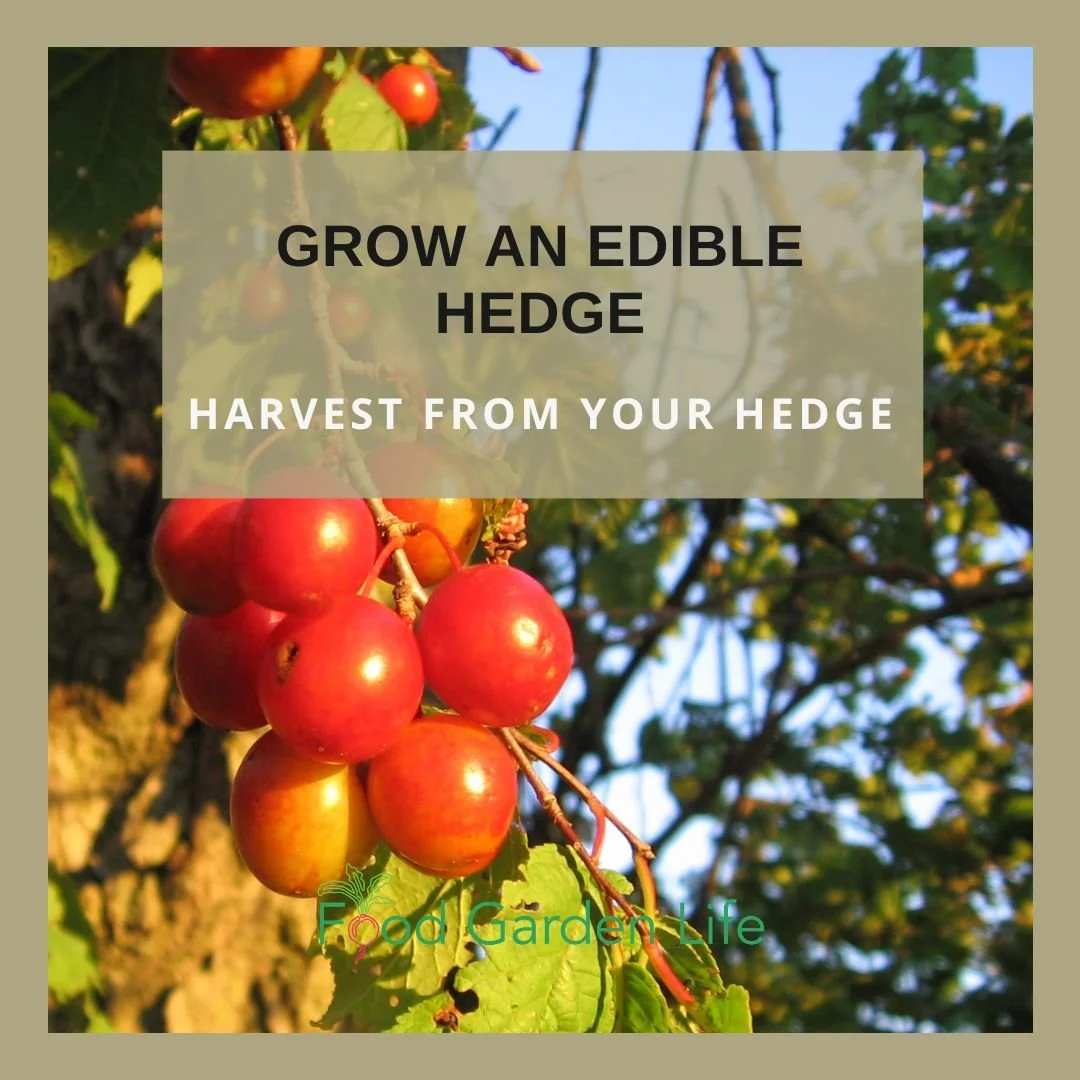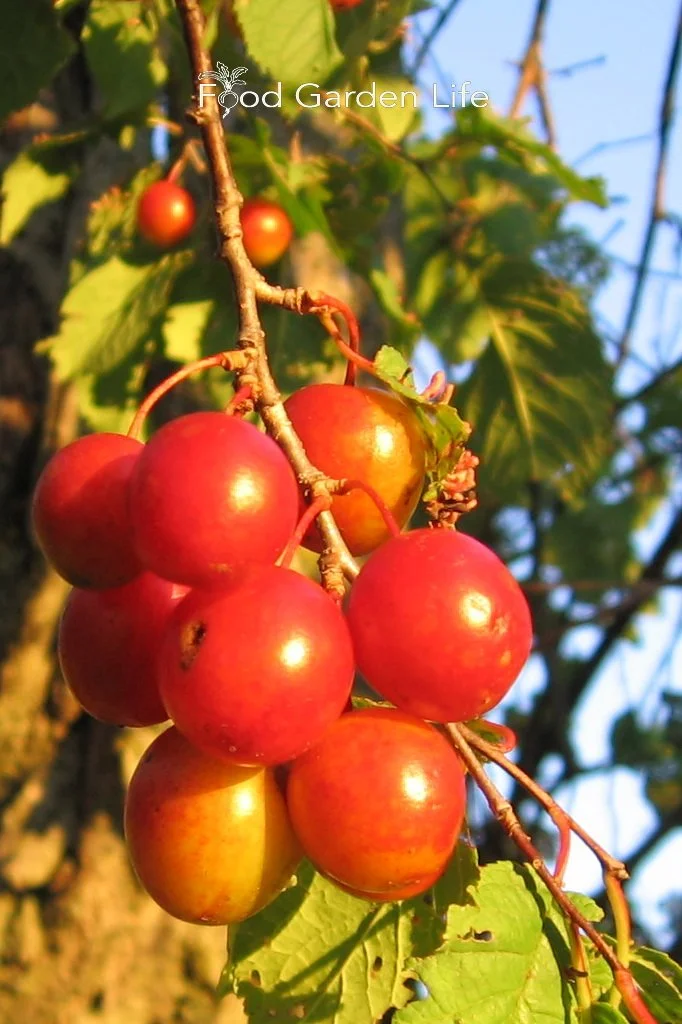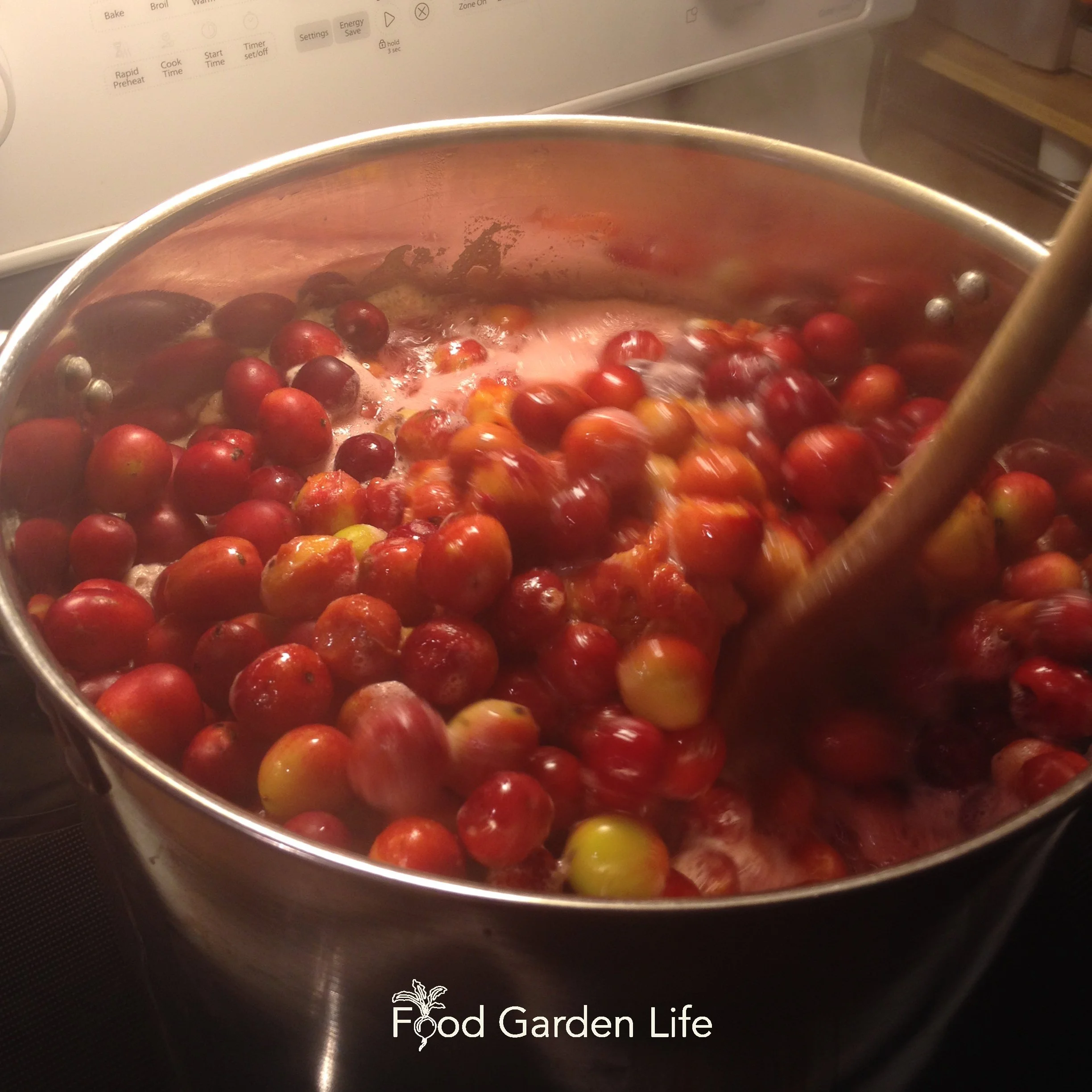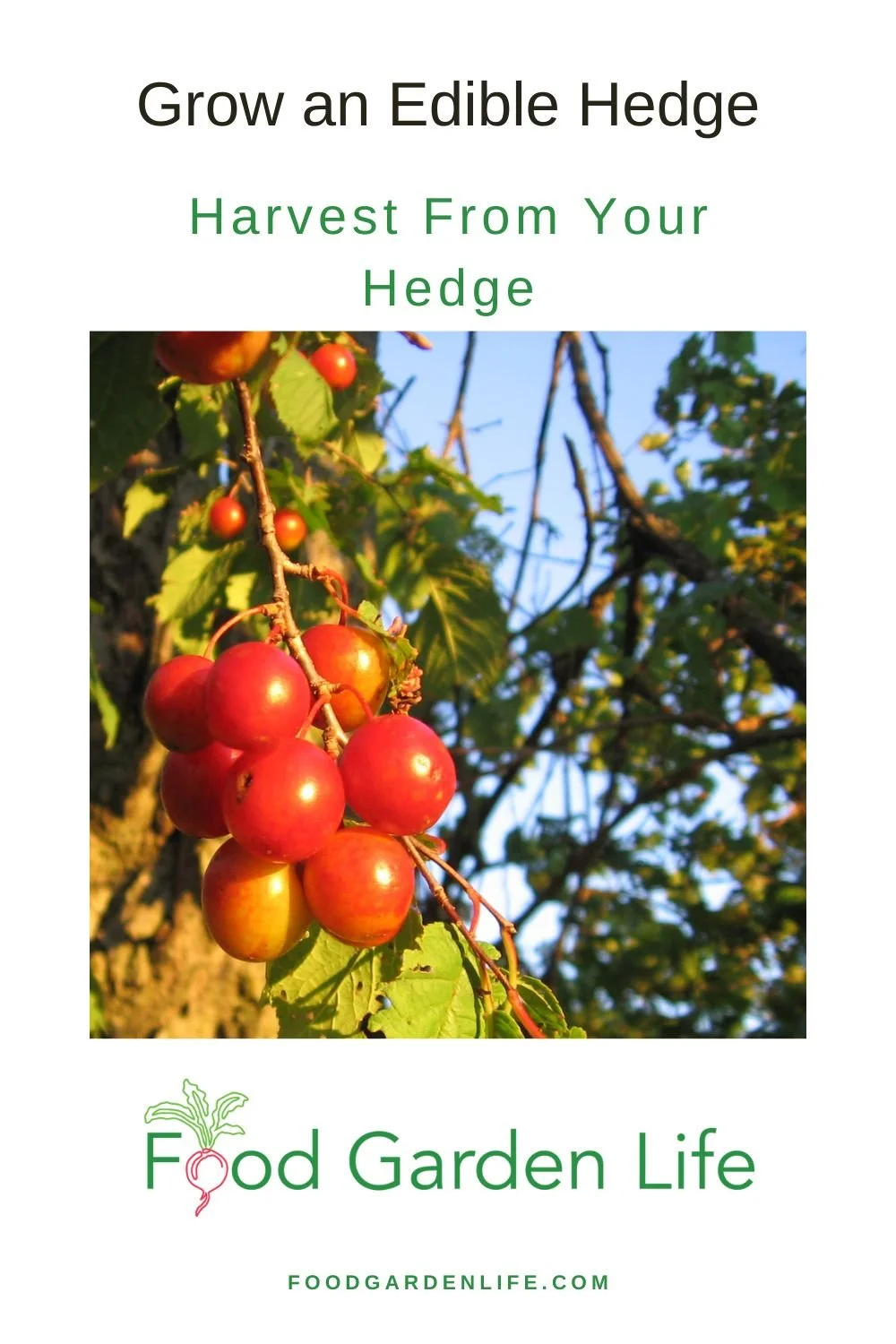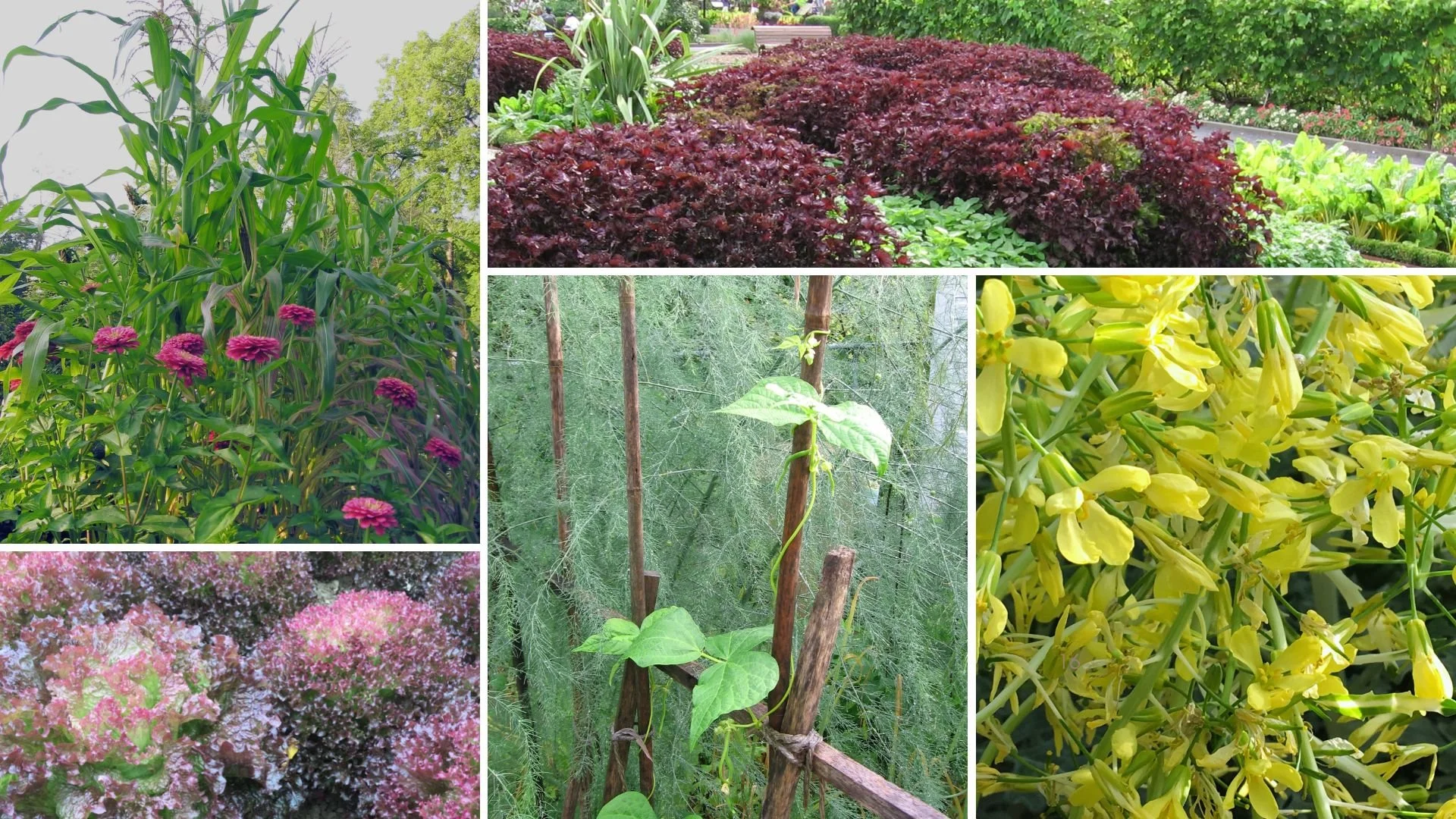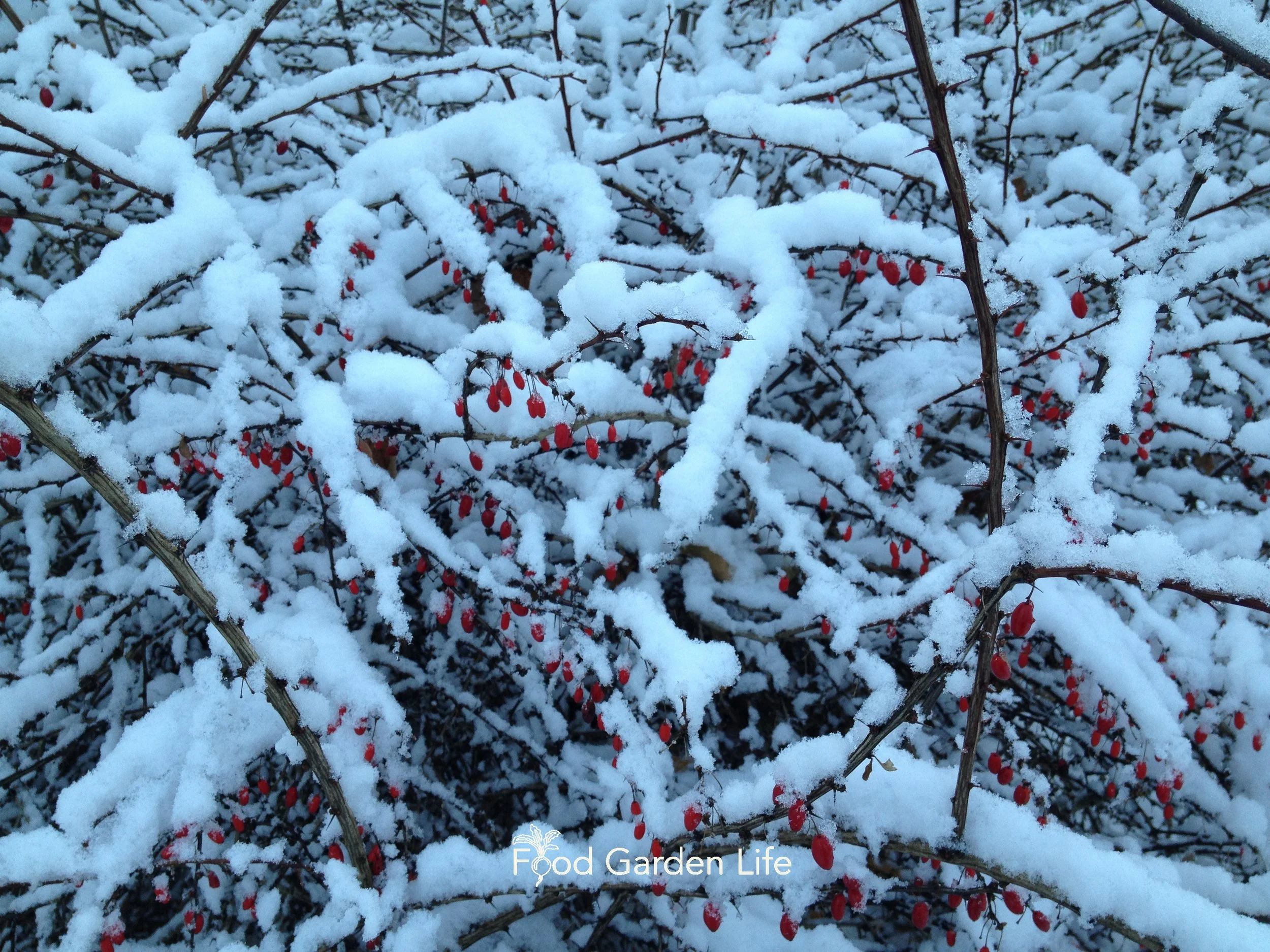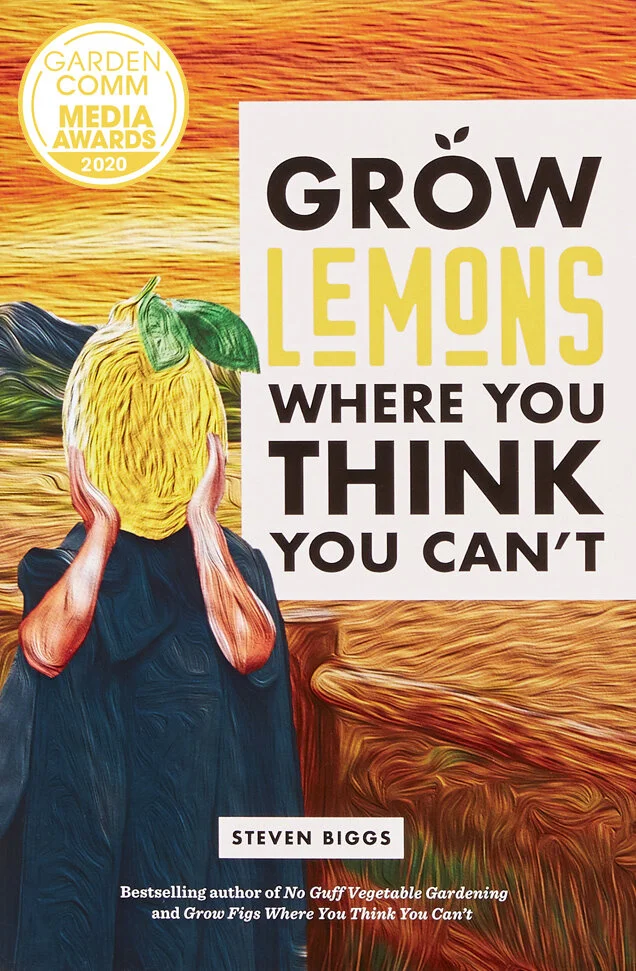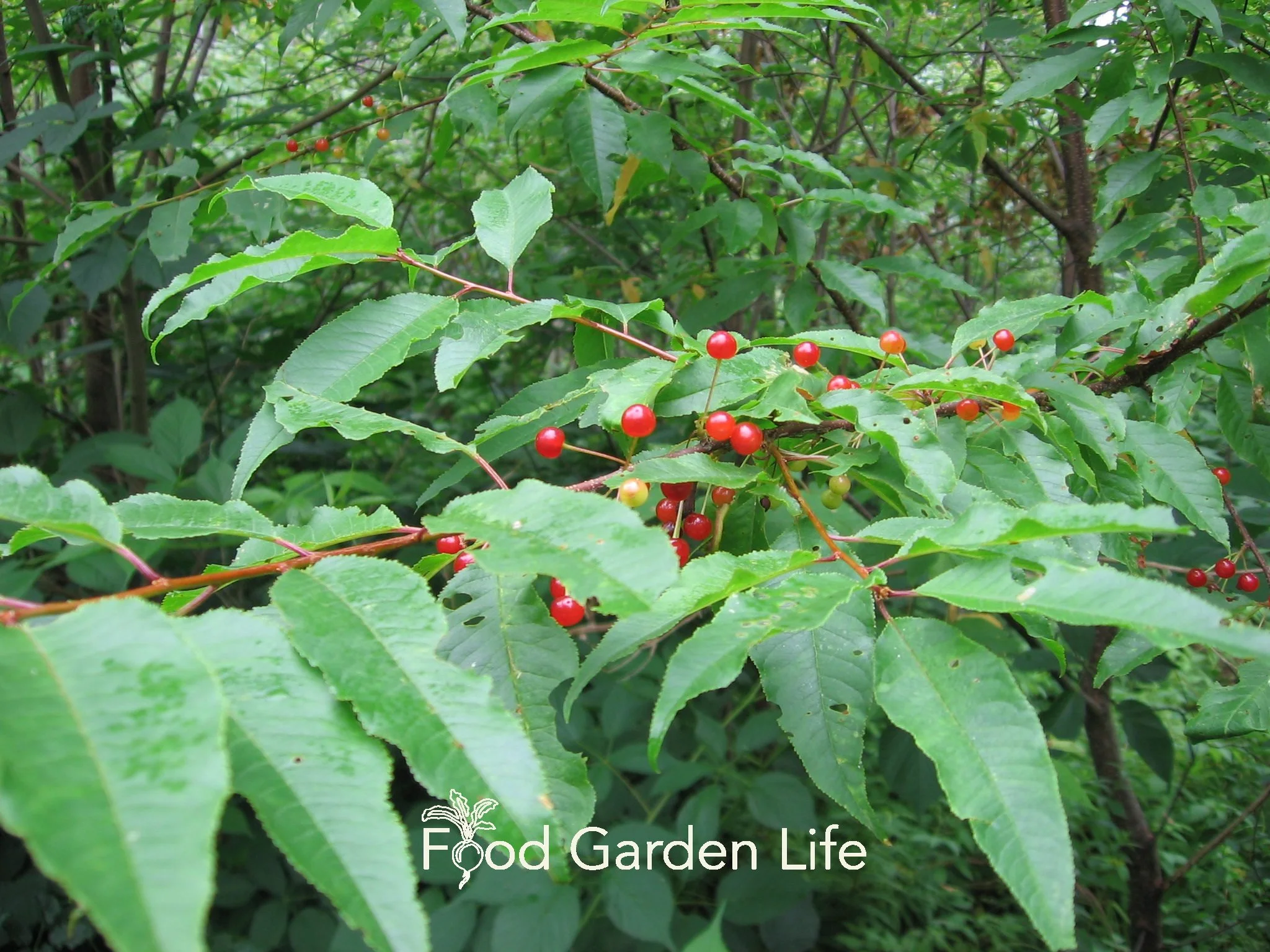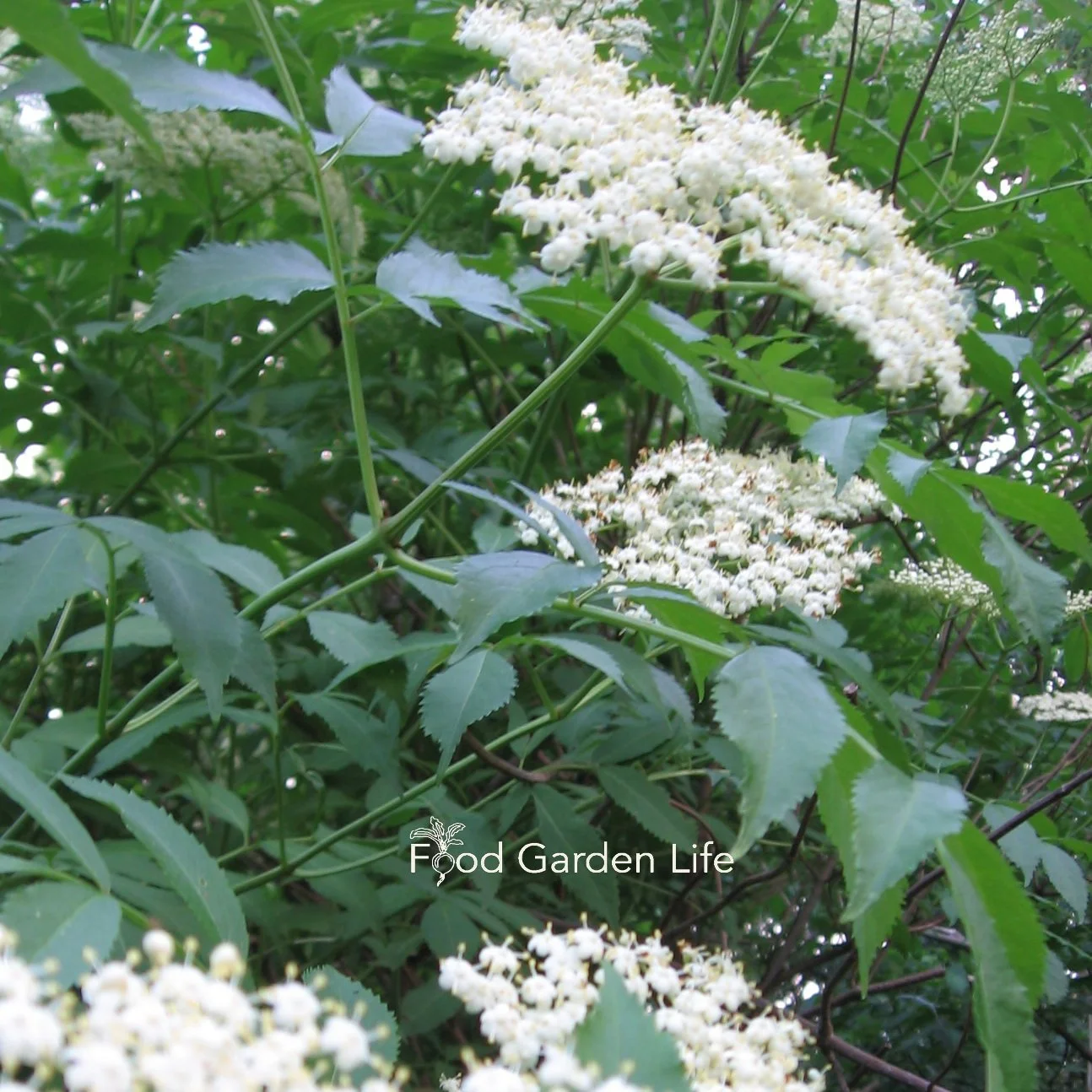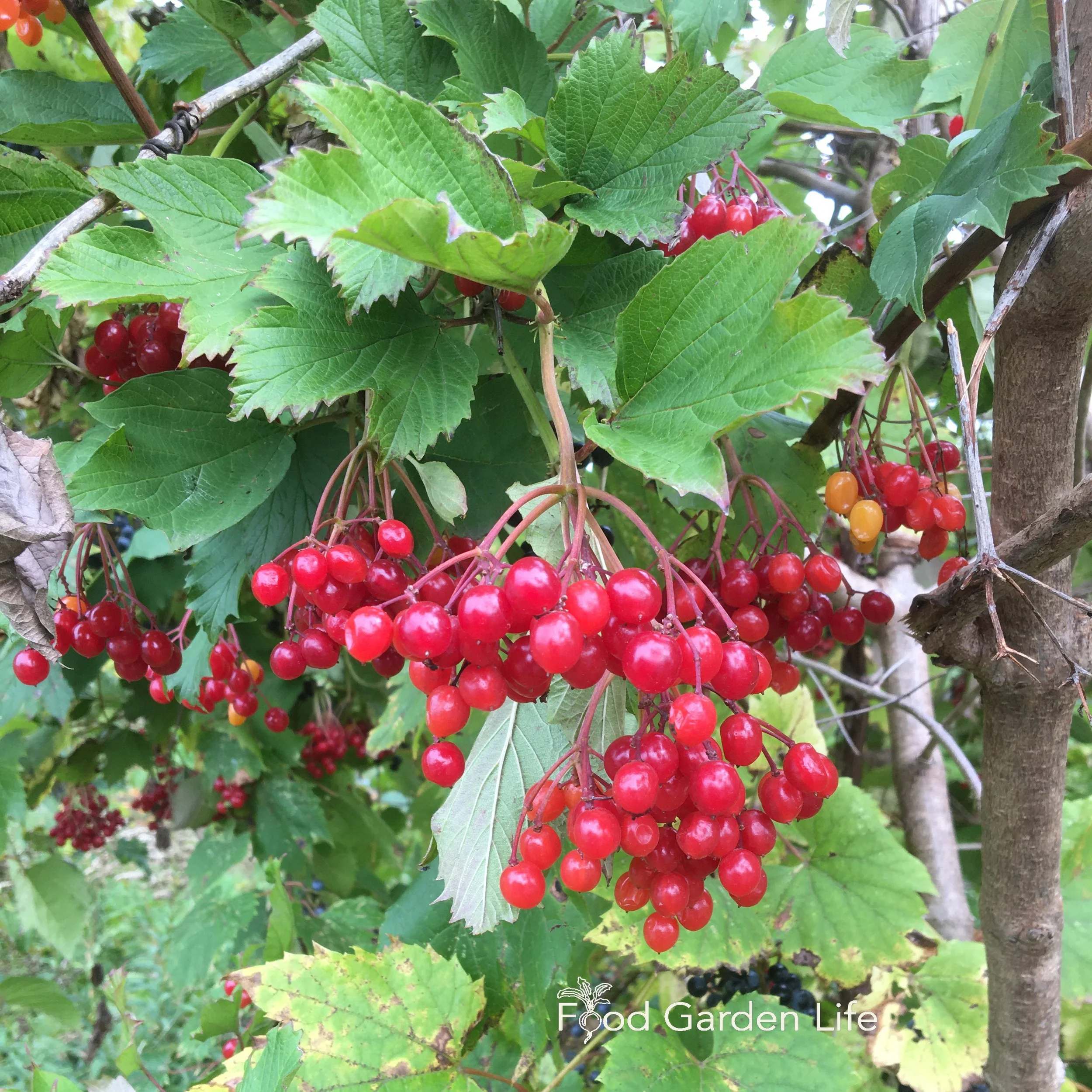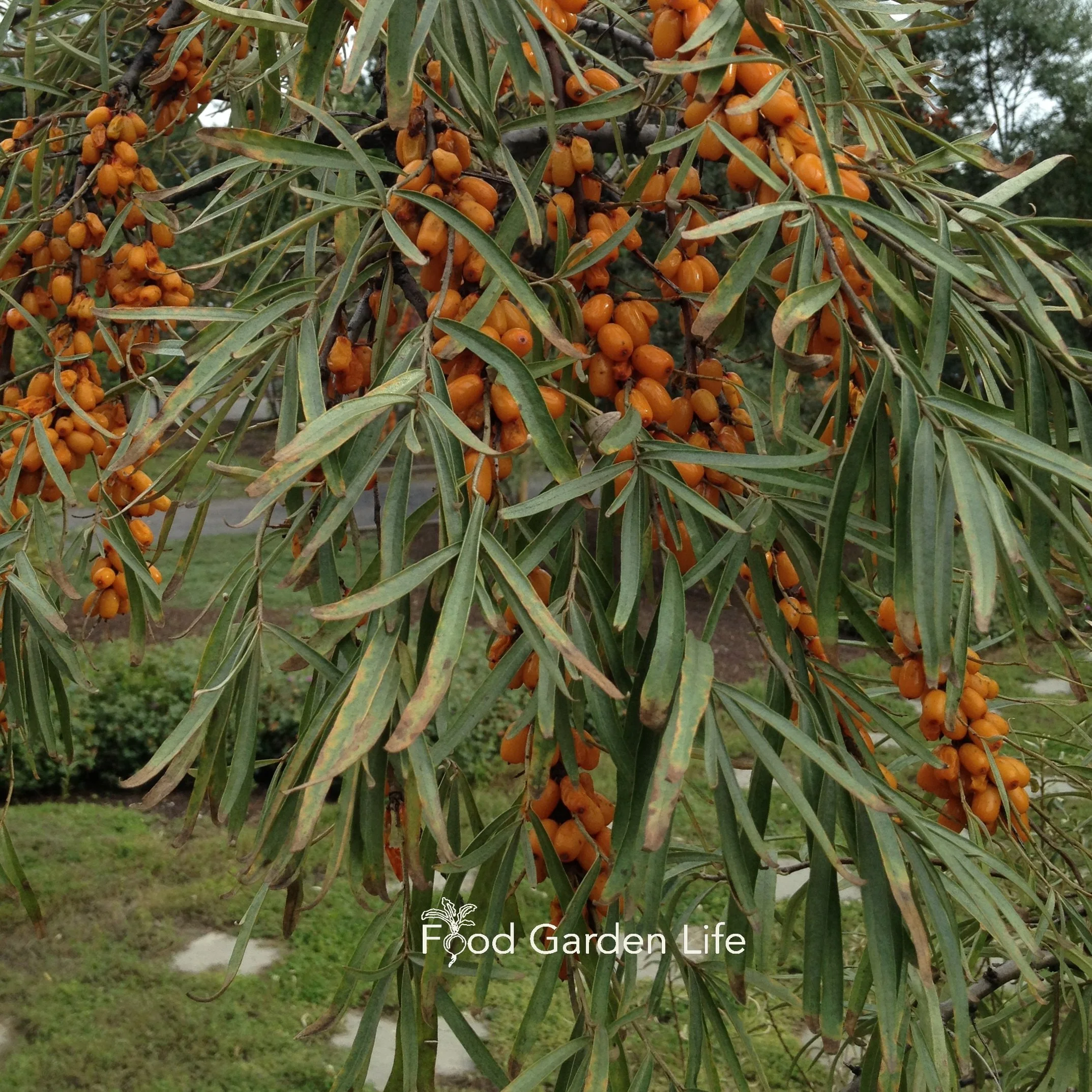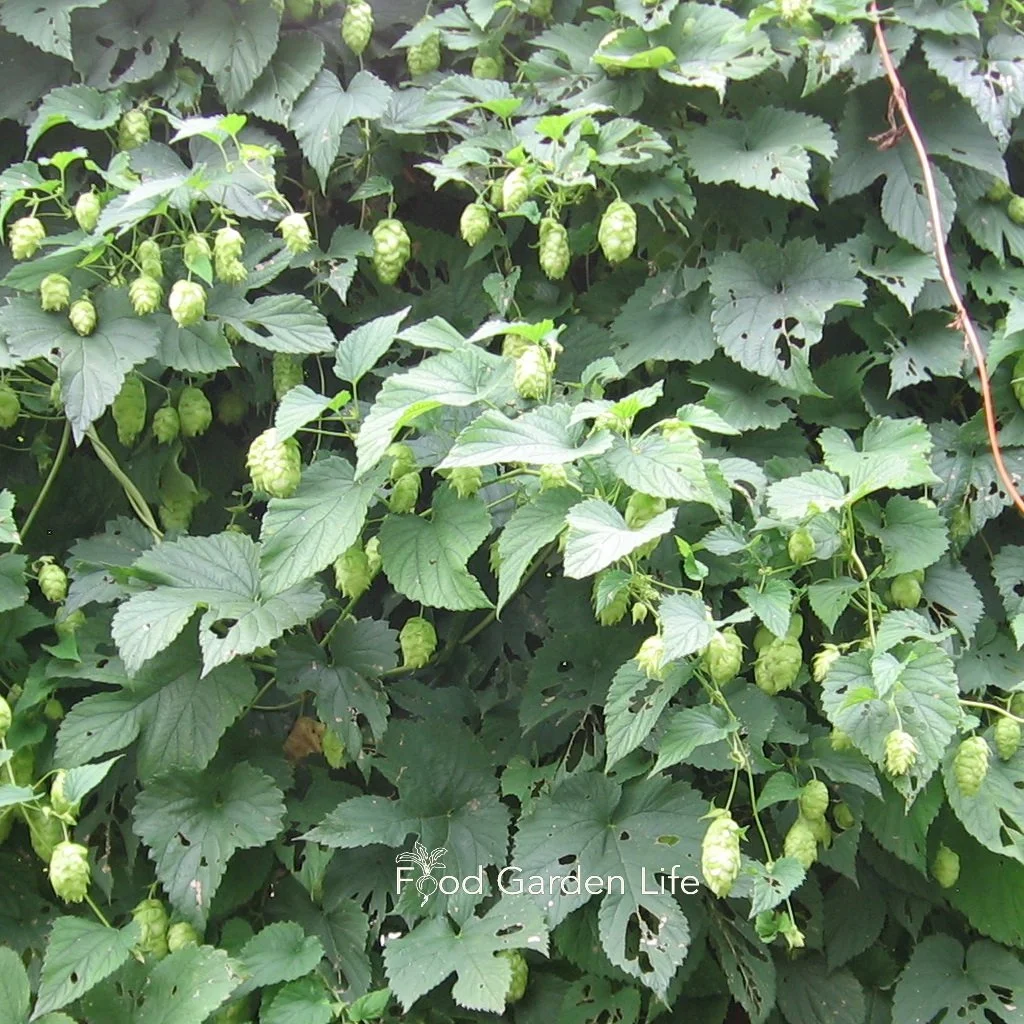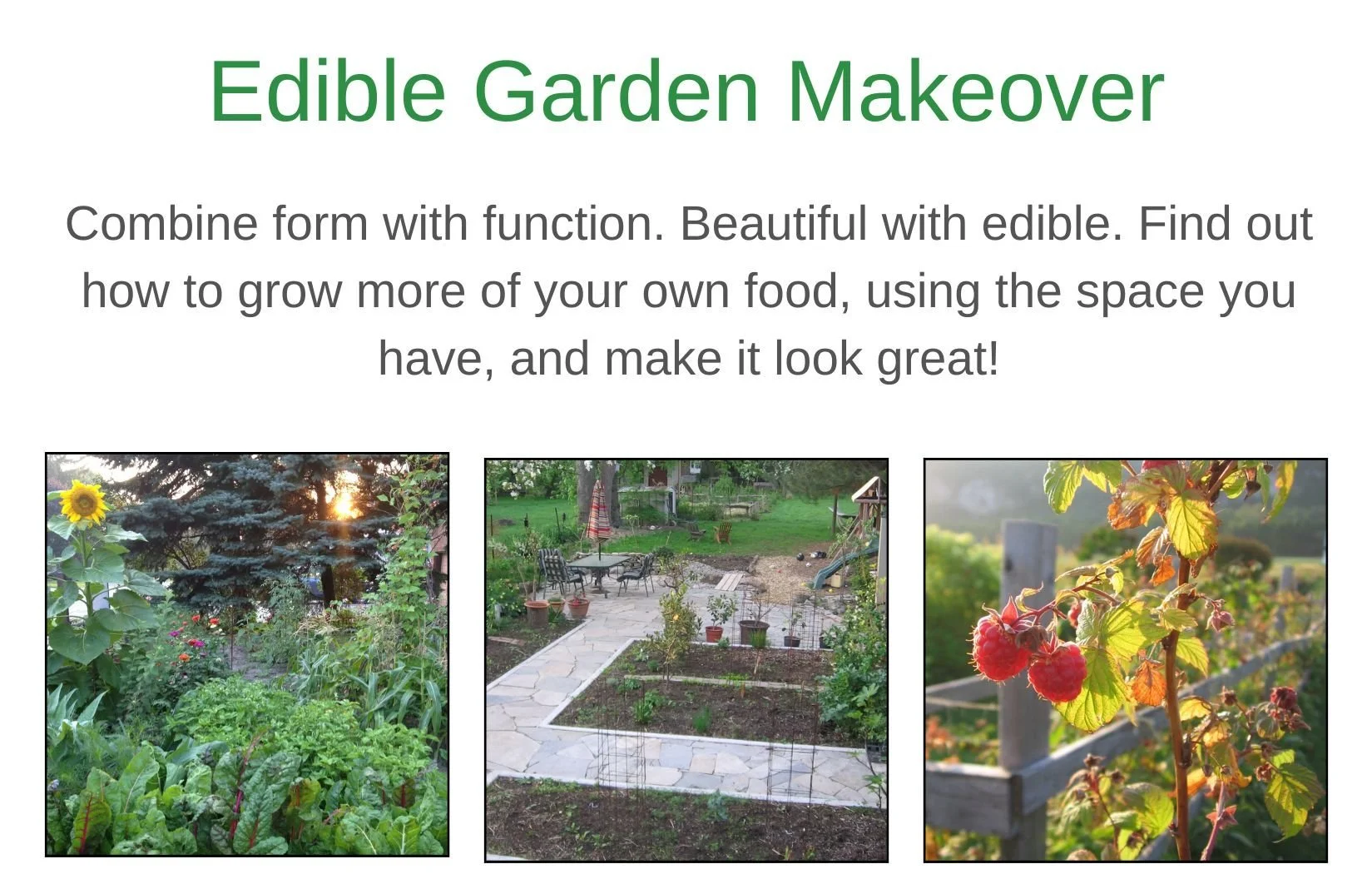By Steven Biggs
Edible Hedge to Food-Forest Hedge
Find out how to grow an edible hedge.
Need more space in your garden? I’m always looking for ways to squeeze more food plants into my edible landscape. My “foodscape.”
I recently dotted my rows of currant and gooseberry bushes with plum trees. At the base of the rows are strawberry plants and mint. My edible hedge of currant and gooseberry bushes is becoming a “food forest hedge.”
The currants tolerate shade—so as the plum trees get bigger and shade them, the two can co-exist. The strawberry plants need some sun, and along the south-facing edge they get it. And the rapacious mint (which I never normally plant in the ground because it’s so aggressive) fills in shadier nooks.
If your challenge is space—if you have a list of fruit trees and bushes you want to grow, but can’t see how they’ll fit into your yard—an edible hedge might be the answer.
Keep reading because this article will give you ideas for creating an edible hedge suited to your space.
My Edible Hedge Inspiration was a Hedgerow
Wild plums growing in a hedgerow at my friend’s farm got me excited about the idea of an edible hedge and food-forest hedges.
When I was walking the edge of a field at my friend Anton’s farm one day, I came to a spot where the hedgerow was painted red by a heavy crop of fruit. Wild plums. I stood there grazing plums—and when I was full I went back to the farmhouse to get Anton.
We picked a bushel of plums and barely scratched the surface. They made excellent plum pie and plum jam.
I remember thinking that if fruit grows so prolifically on its own, the manicured approach of an orchard might not always be the best approach for a busy home gardener.
That experience also made me think of when I lived in the UK, in a rural area where small fields were separated by hedgerows. From those wild hedgerows I picked plums, blackberries, and raspberries.
(And come to think of it, my neighbour gave me a pheasant that he hunted from the hedgerows too! I made roast pheasant with a mulberry-Cointreau sauce.)
What is an Edible Hedge?
Cooking wild plums from the hedgerow.
Whenever I see a perfectly clipped cedar hedge boxing in a yard, I wonder what it would look like to instead have a perimeter of edible plants. An edible hedge.
An edible hedge is just a row of food-producing trees, shrubs, and herbaceous plants:
It can be a row of a single type of plant, like my former currant hedge – or it can be a mixed and layered planting, sometimes called a “food-forest hedge”
It can be manicured – or it can look more natural, like that plum-laden hedgerow
The plants in your edible hedge can have different edible parts:
Fruit (e.g. plum, blueberry, elderberry)
Nuts (e.g. hazelnut)
Flowers (e.g. rose, elderberry, redbud)
Leaves (e.g. grape leaves)
What is a Food-Forest Hedge?
Pin this post!
With a food-forest hedge, we take the idea of an edible hedge and weave in ideas used in permaculture, giving a dense, mulit-layered planting.
Whichever approach you prefer, with a diverse planting you can get a staggered harvest. In a home garden we’re focusing on a hedge for year-long grazing. We’re not trying to replicate the way a commercial grower maximizes yield over a short period.
One other thing: The more diverse the mix of plants in your edible hedge, the better your “garden insurance.” If one plant flounders, another takes over.
Using Edible Hedges in an Edible Landscape
There are different ways you can weave an edible hedge into an edible landscape.
Backbone. Use the hedge as the backbone of your garden, the feature that leads you into your space. I’ve often seen deep yards with long perennial beds that serve this goal…why not an edible hedge?
Backdrop. Your edible hedge is at the perimeter of your space. It defines the space, gives you privacy—and gives you food.
Windbreak. In open areas where wind is a challenge, use your edible hedge as a windbreak.
Garden room. Use your edible hedge to separate part of your yard and create a separate garden room.
Enjoy playing with colour, texture, and shapes?
Don’t want a cookie-cutter veggie garden?
If you've thought of growing more of your own food, but you don’t know what to do next, Edible Garden Makeover gives you the ideas, knowledge, and inspiration to grow food in a way that fits your yard and your style.
Remember the Rules…and Maybe Break Them
If what I’ve said so far sounds like blasphemy to you—if you’re picturing a tangled mess—here’s a bit more to think about:
Small-space gardens don’t have to follow the rules that orchardist follow or that textbooks prescribe. You can plant multiple fruit trees in one hole! Check out these ideas from Dave Wilson Nursery.
Permaculture orchardist Stefan Sobkowiak joined me on The Food Garden Life Show to talk about his orchard system of “trios” that mixes up different fruit tree species with nitrogen-fixing trees. You can tailor the same sort of “polyculture” to your yard. Tune in here to hear about his system.
Gardening is a great cure for perfectionism.
Edible Hedge Plants Ideas
Here are plant ideas for your edible hedge, edible food-forest, or hedgerow.
Barberry bush in the winter. The berries are edible.
Barberry
I love barberry for the red berries that last right into the winter. Beautiful—and edible. (Try dried barberry with rice.)
Blackberry and Raspberry
Raspberry canes sucker a lot, so be prepared for them to spread. My thornless blackberries are well behaved and don’t sucker. (But they do “tip layer.” Here’s more on tip layering.)
Some raspberry varieties fruit only in summer. Some also fruit in the fall. Take your pick.
Blueberry
Not something I grow here because my soil isn’t ideal, but a staple for edible hedges where it grows well.
Bush Cherries
There are a few different members of the cherry family that have a bush-like growth habit and can be a good fit for an edible hedge, edible landscape, food forest, or hedgerow.
Nanking Cherry
Dwarf Sour Cherry
Evan’s Cherry
There are also a couple of native cherries that grow as small trees or bushes—and you can prune them so that they have a bush form.
Pin cherry, a native cherry that works well in an edible hedge.
Chokecherry
Pin Cherry
Find out more about different cherries for your edible hedge.
Take a deep-dive into Nanking cherry.
Cherry Plum
The cherry plum (Prunus cerasifera) isn’t too common in the landscape trade—and that’s a pity. It’s extremely cold tolerant, had attractive spring bloom, edible fruit, and nice fall colour.
Chokeberry
The chokeberry (Aronia melanocarpa) is a native North American shrub that is often overlooked. It’s also simply called “aronia” sometimes. The fruit has pucker power, but mixed with other fruit in smoothies, or made into a syrup, it’s great.
Hear more about aronia in this chat with agronomist Laurie Brown.
Crabapple
Dolgo crabapples.
There’s crabapple…and then there’s crabapple! Some are small and horrid, so sour and astringent that you’ll regret tasting them.
But there are others that are so tasty you’ll go back for more. My favourite crabapple is ‘Dolgo,’ a variety known for its excellent culinary properties. (We make it into a beautiful red sauce—and into crabapple ice cream.)
Currants
I have a lot of good things to say about currants (Ribes sp.) for home gardeners in cold climates. They’re great for edible landscapes, edible hedges, food forests, and more! In a nutshell, they tolerate shade and poor soil, and still fruit well even when not pruned to perfection.
Find out how to grow a great crop of currants.
Hazel
The American hazelnut (Corylus americana) is a fast-growing shrub that’s very cold hardy. If it weren’t for the army of squirrels that marches on my garden as soon as anything emerges, I’d have lots of hazel.
Like currants, it does fine in poor soil.
(And one more idea for you: If you’ve ever thought of coppicing as a way to produce your own garden poles and stakes, hazel is a good candidate.)
Hardy Kiwi
Here’s an easy-to-grow, hardy fruit vine that can be a nice addition to an edible hedge.
Hear about hardy kiwi as we chat with agronomist Laurie Brown.
Rose
Rose petals are edible, and rose hips (the fruit) are good for teas, jellies, and liqueurs.
Whatever you do, don’t put a hybrid tea rose or a fussy floribunda rose in your edible hedge. Get a disease-resistant shrub rose.
Elderberry
Flowers on elderberry are edible too!
Elderberry (Sambucus canadensis) has both edible fruit and flowers. We make elderflower champagne and elderberry syrup.
Elderberry tolerates partial shade and moist conditions. My first elderberry patch was from a wild plant I dug at a friend’s farm. But there are also improved varieties for larger fruit size and increaded yield.
Hear our chat about elderberry with agronomist Laurie Brown.
Grape
Probably not for those who want a more manicured look…but a grape vine can wend its way through a hedge until if finds space and light.
Remember, along with the fruit, young grape leaves are great for making dolmades (stuffed grape leaves.)
Looking for grape variety ideas but not sure where to start? Hear about “Canada’s Grape.”
Haskap
Haskap (Lonicera caerulea) is a very cold-hardy bush with fruit that looks like elongated blueberries.
They’re a great fit in a mixed planting such as an edible hedge because they’re the first fruit of the summer, usually ready at the same time as strawberries.
Hear our chat with Haskap breeder Bob Bors.
Highbush Cranberry
Highbush cranberry fruit.
Highbush cranberry (Viburnum trilobum) is a native North American plant that’s very cold-tolerant. It looks very nice too. There are flowers mid-summer, bright red berries for winter appeal, and you don’t harvest until after there’s been frost.
Like elderberry, it’s a good candidate for areas with more soil moisture.
(Highbush cranberry is not related to commercially produced cranberries.)
Hear foraging expert Robin Henderson talk about foraging highbush cranberry.
Plum
You have lots of choice when it comes to plums. There are wild plums, European plums, Japanese plums—and plum relatives such as damsons.
I planted damsons because I can’t find the fruit for sale anywhere…and I remember the damson-jam tarts my Nana made for me when I was a kid.
Quince
There’s the quince tree (Cydonia oblonga), and also the unrelated Japanese quince bush (Chaenomeles sp.). Both give fruit that’s too hard and acrid to eat when picked—but which can be cooked into marvellous delights.
Find out more about how to grow quince.
Sea Buckthorn
Sea buckthorn adds nice contrast to an edible hedge.
Sea buckthorn (Hippophae rhamnoides) is a super tough, wind, heat, and drought-resistant plant that grows in poor soil.
The silvery leaves and orange berries make it a beautiful addition to an edible hedge (although I can’t say I’m in love with the taste…)
Hear agronomist Laurie Brown talk about sea buckthorn.
Serviceberry
With serviceberry, we’re talking about a family of related fruiting bushes and small trees. Also called Juneberry in the USA. Saskatoon berry is a member of this clan that’s grown commercially, and has many improved varieties.
Find out how to grow the Saskatoon berry (a.k.a. Juneberry).
You Don’t Have to Rule Out Tree Fruits
If you’re not worried about a manicured hedge clipped to a low height, remember that you can add in fruit trees too.
And you don’t even have to grow them as trees…as Dr. Ieuan Evans tells us, many of what we think of as tree fruits can grow as bushes too. Find out more about growing fruit trees as bushes.
Remember You Can Add Herbaceous Plants
Permaculture design encourages multiple layers, something you can incorporate into an edible hedge.
Read about perennial edible plants for edible landscapes.
Looking for More Ideas?
Looking for more food-hedge ideas? Hedgerows might give you inspiration.
How About an Alcoholic Hedge?
Hops as a hedgerow plant.
UK garden designer Matt Rees-Warren talks about hedgerows with food plants such as blackberry, sloe berry, hops, raspberry, and hazelnuts.
Wondering about sloe berries? They’re in the same family as plums—and are often used to make sloe gin. That’s why Rees-Warren says sometimes these hedgerows are called, “alcoholic hedges.”
Edible Hedges in Permaculture
Permaculture farmer Tim Southwell in Montana grows what he calls a “food hedge” (or “fedge”) on his permaculture farm. It provides privacy, blocks wind, attracts birds, and keeps livestock where they are supposed to be.
Find out more about Tim’s food hedge.
Edible Hedges Have Much in Common with Forest Gardens
Dani Baker is a forest-garden expert. A forest garden, like a food-forest hedge, is set up with layers of edible plants, designed to be a self-sustaining system once established.
Many of her ideas can be applied to an edible hedge. Hear about how to grow a home-scale forest garden.
Edible Hedge Hints and Tips
Pick plants for your garden hardiness zone.
Think of sunlight…but don’t be a perfectionist, because a hedge isn’t a perfect setting for a crop.
Mulch so that weeds don’t get the upper hand.
FAQ
How do I prune an edible hedge?
If you a growing an edible hedge with a number of different plants in it, forget having a manicured, uniform hedge.
Prune each of the different plants within the hedge to optimize fruit production. For example, elderberry fruits best on second-year branches—so when you get to your elderberry bushes, prune away many of the old branches to encourage new growth.
I said above to forget the notion of a manicured hedge, but that doesn’t mean you can’t pick a maximum height. You might want to cap the height so you can harvest without a ladder. (That’s what I do with my pawpaw trees, keeping them short enough to pick from the ground.)
But what about birds?
Depending on where you are, you might find that some of your edible crops are very attractive to birds. I know that my haskaps are ripe when I see robins darting into the bush!
My approach to birds is to pick fruit that they favour in good time. The longer it’s on the bush, the more they get. This doesn’t mean picking the fruit before it’s ripe—but not waiting long once it’s ripe. I don’t get as much as I would if I netted the bushes…but netting takes time.
What about plant spacing for edible hedges?
Spacing recommendations are often for commercial production. A hedge is different; we’re creating a dense, layered mix of plants. Don’t be afraid to play around with spacing.
What if my garden is shady?
If your garden is shady, you can’t grow everything I mentioned above. But you DO have options. Find out more about plants for shade.
More on Edible Landscaping
Need Help?
Get professional advice from horticulturist Steven Biggs.

